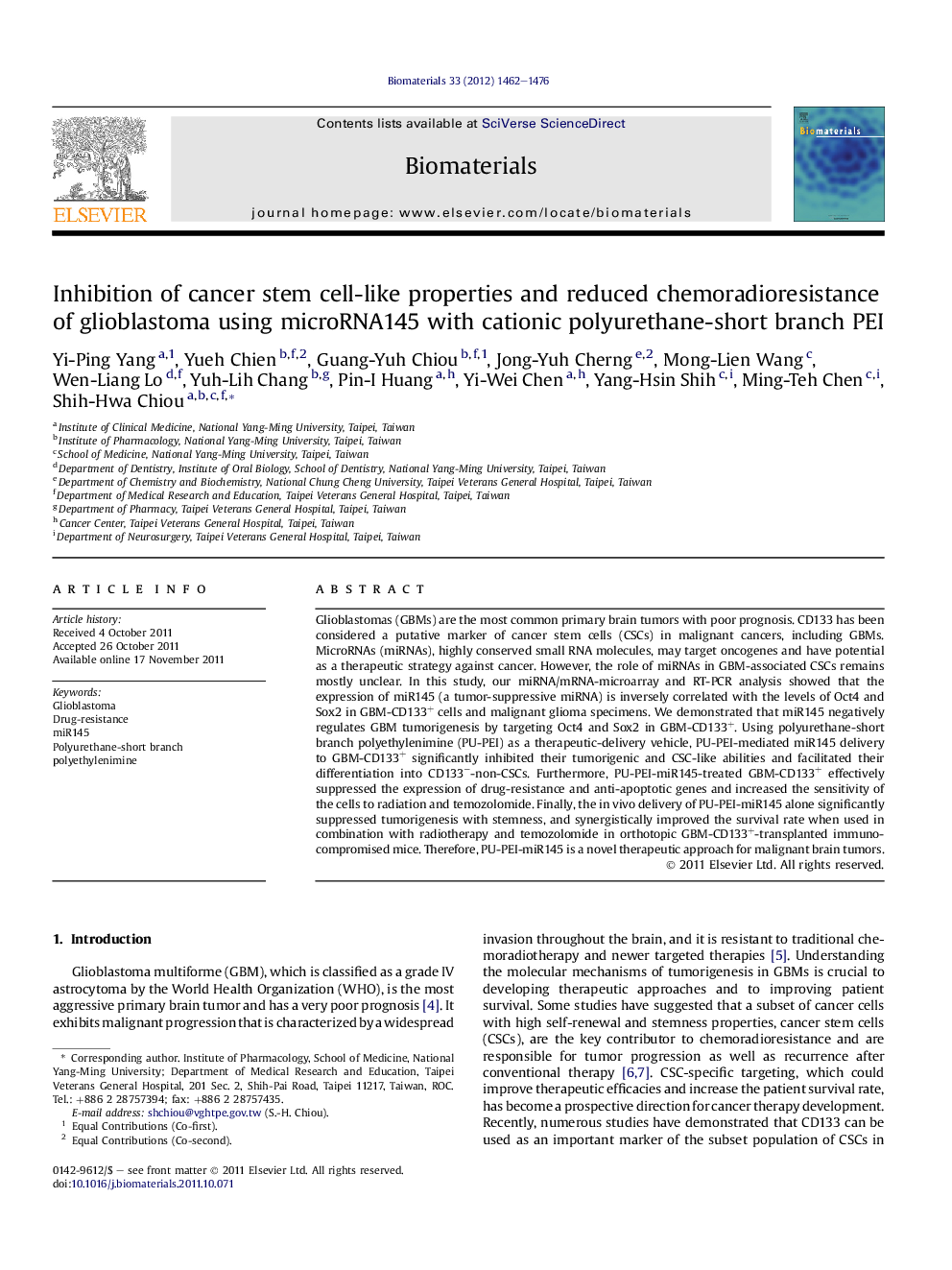| Article ID | Journal | Published Year | Pages | File Type |
|---|---|---|---|---|
| 10229831 | Biomaterials | 2012 | 15 Pages |
Abstract
Glioblastomas (GBMs) are the most common primary brain tumors with poor prognosis. CD133 has been considered a putative marker of cancer stem cells (CSCs) in malignant cancers, including GBMs. MicroRNAs (miRNAs), highly conserved small RNA molecules, may target oncogenes and have potential as a therapeutic strategy against cancer. However, the role of miRNAs in GBM-associated CSCs remains mostly unclear. In this study, our miRNA/mRNA-microarray and RT-PCR analysis showed that the expression of miR145 (a tumor-suppressive miRNA) is inversely correlated with the levels of Oct4 and Sox2 in GBM-CD133+ cells and malignant glioma specimens. We demonstrated that miR145 negatively regulates GBM tumorigenesis by targeting Oct4 and Sox2 in GBM-CD133+. Using polyurethane-short branch polyethylenimine (PU-PEI) as a therapeutic-delivery vehicle, PU-PEI-mediated miR145 delivery to GBM-CD133+ significantly inhibited their tumorigenic and CSC-like abilities and facilitated their differentiation into CD133â-non-CSCs. Furthermore, PU-PEI-miR145-treated GBM-CD133+ effectively suppressed the expression of drug-resistance and anti-apoptotic genes and increased the sensitivity of the cells to radiation and temozolomide. Finally, the in vivo delivery of PU-PEI-miR145 alone significantly suppressed tumorigenesis with stemness, and synergistically improved the survival rate when used in combination with radiotherapy and temozolomide in orthotopic GBM-CD133+-transplanted immunocompromised mice. Therefore, PU-PEI-miR145 is a novel therapeutic approach for malignant brain tumors.
Keywords
Related Topics
Physical Sciences and Engineering
Chemical Engineering
Bioengineering
Authors
Yi-Ping Yang, Yueh Chien, Guang-Yuh Chiou, Jong-Yuh Cherng, Mong-Lien Wang, Wen-Liang Lo, Yuh-Lih Chang, Pin-I Huang, Yi-Wei Chen, Yang-Hsin Shih, Ming-Teh Chen, Shih-Hwa Chiou,
